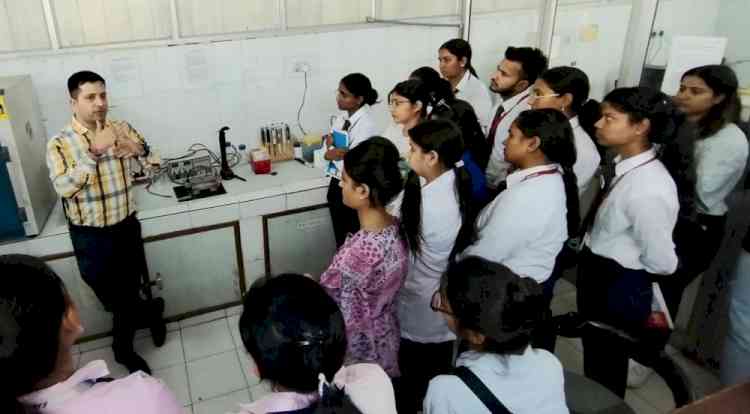Non-smokers equally at risk of COPD: Dr.Garde
Author(s): City Air NewsPeople are still ignorant or confused about COPD due to lack of awareness India is changing - not only in terms of its demographics, urbanization, and economic profile but also in terms of its health burden, disease...

People are still ignorant or confused about COPD due to lack of awareness
India is changing - not only in terms of its demographics, urbanization, and economic profile but also in terms of its health burden, disease pattern, dominant-disease-composition, morbidity and mortality determinants. India, contributes a significant and growing percentage of COPD mortality which is estimated to be amongst the highest in India in next 10 years.
Chronic Obstructive Pulmonary Disease (COPD) is a lung ailment that is characterized by a persistent blockage of airflow from the lungs. It is an under-diagnosed, life-threatening lung disease that interferes with normal breathing and is not fully reversible. COPD sets in as progressive disease and becomes a chronic disease. COPD is not curable, but treatment can delay the progress of the disease. According to WHO report, more than 3 million people died of COPD, which is almost equal to 6 % of all deaths globally.
The most common symptoms of COPD are cough, breathlessness and anyone exposed to any kind of pollution. COPD is preventable. The primary cause of COPD is tobacco smoke (including second-hand or passive exposure). Other risk factors include:
• Indoor air pollution (such as solid fuel used for cooking and heating in rural areas);
• Outdoor air pollution;
• Occupational dusts and chemicals (vapours, irritants and fumes);
• Frequent lower respiratory infections during childhood.
Dr. Samir Garde – Pulmonologist, Global Hospitals Mumbai says, “Improperly treated Asthma can lead to COPD, which earlier used to occur in the age of 40 years and above, but now many of the cases are being detected at the age of 35 years. Smokers as well as non-smokers are prone to COPD; non-smokers are prone due to high pollution in urban areas and bio-mass fuel release in rural areas. The disease now affects men and women almost equally, due to increased use of tobacco among women in India. Urban smoking has increased in females in last 5 – 6 years which in itself is a worrying situation. "People with conditions like High cholesterol, diabetes, heart problems and osteoporosis deserve a work up even for COPD; since COPD and these co morbidities often coexist.”
Pulmonary Function Test (PFT) that measures how much air a person can inhale and exhale, and how fast air can move into and out of the lungs, can reveal that if a person is suffering from COPD or not. With the current scenario in the society and lifestyle, out of every 100 people 10 people will suffer from COPD in near future.
Various forms of treatment can help control its symptoms and increase quality of life for people with the illness. Patients are treated with excellent inhalers called bronchodilators and oral medicines that help dilate major air passages of the lungs and can improve shortness of breath. Depending upon the patient’s condition, patients are advised for pulmonary rehabilitation. In rehabilitation their respiratory system is build with physiotherapy, nutrition and protein diet for a better life. Sometimes patients prefer inhalers and medicine over rehabilitation for a quick recovery, which doesn’t happen so easily.
To control COPD in India, we should create awareness on hazardous of smoking, raise awareness about the global epidemic diseases; create more healthy environments, especially for poor and destitute populations in rural India; decrease risk factors of disease, such as use of tobacco, unhealthy diet and physical inactivity; and prevent premature deaths and avoidable disabilities from major non-communicable diseases.
Date:
Monday, November 16, 2015

 cityairnews
cityairnews 
















